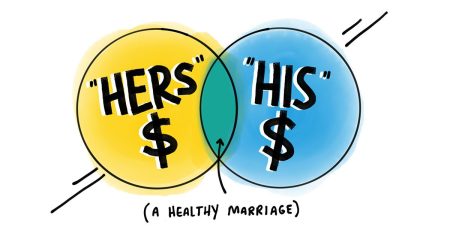Just when you started getting comfortable with your annual chore of tax filing, the 2018 tax reform bill hit the scene—and everything changed. From tax rates to deductions, a whole bunch of tax changes forced millions of Americans to rethink how they did their taxes.
But here’s the thing: Even though the tax reform bill brought some big changes, it also made a lot of things simpler.
Stick with us, and we’ll break down the details so you understand what’s changed and how those changes impact you!
How the Tax Reform Bill Impacted Your Taxes
Even though the tax reform bill—formally known as the “Tax Cuts and Jobs Act”—was introduced way back in 2017, it didn’t go into effect until you filed your 2018 taxes that were due in April 2019. Nearly all of the changes made in the bill will expire after 2025, while most of the business provisions will stay in place.
Almost everyone felt the difference, and you probably even noticed that less money was withheld from your paychecks in 2018 as a result of the changes.
Here’s a rundown of all the changes that came with the tax reform bill.
New Income Brackets and Marginal Tax Rates
First, one of the most talked about changes in the 2018 tax reform bill was the update to income tax brackets and marginal tax rates.
So, what are marginal tax rates? Those are the percentages of your income that you pay in taxes. What this means for you: Your income is not taxed at one rate but at several different rates, depending on how much you make.
How do you know your tax rates? Enter tax brackets. Tax brackets are income ranges. It’s that simple.
Each tax bracket corresponds to a tax rate. For example, if your income is $120,000, your tax rate isn’t a flat 24%. Instead, part of your income is taxed at 10%, part at 12%, part at 22% and part at 24%. (You can check out the chart below to see all the tax brackets with their corresponding tax rates.)
Here’s the thing about income brackets and tax rates: It’s fairly common for tax brackets to change to account for inflation each year. But the marginal tax rates only change when a new tax law is passed—which doesn’t happen often. That’s why people were especially interested in this part of the tax reform bill.
The tax reform bill lowered marginal tax rates, which was good news for many Americans because it meant they could pocket more money from their paychecks!
To help you see those changes, take a look at the 2017 and 2018 marginal tax rate tables.
2017 Marginal Income Tax Rates and Brackets
|
2017 Marginal Tax Rates |
Single 2017 Tax Bracket |
Married Filing Jointly 2017 Tax Bracket |
Head of Household 2017 Tax Bracket |
Married Filing Separately 2017 Tax Bracket |
|
10% |
$0 – $9,325 |
$0 – $18,650 |
$0 – $13,350 |
$0 – $9,325 |
|
15% |
$9,326 – $37,950 |
$18,651 – $75,900 |
$13,351 – $50,800 |
$9,326 – $37,950 |
|
25% |
$37,951 – $91,900 |
$75,901 – $153,100 |
$50,801 – $131,200 |
$37,951 – $76,550 |
|
28% |
$91,901 – $191,650 |
$153,101 – $233,350 |
$131,201 – $212,500 |
$76,551 – $116,675 |
|
33% |
$191,651 – $416,700 |
$233,351 – $416,700 |
$212,501 – $416,700 |
$116,676 – $208,350 |
|
35% |
$416,701 – $418,400 |
$416,701 – $470,700 |
$416,701 – $444,550 |
$208,351 – $235,350 |
|
39.6% |
Over $418,400 |
Over $470,700 |
Over $444,550 |
Over $235,350 |
Chart: 2017 Marginal Income Tax Rates and Brackets1
How do all these numbers stack up to the changes made for the 2018 tax year after the tax reform bill went into effect? Let’s compare.
2018 Marginal Income Tax Rates and Brackets
|
2018 Marginal Tax Rates |
Single 2018 Tax Bracket |
Married Filing Jointly 2018 Tax Bracket |
Head of Household 2018 Tax Bracket |
Married Filing Separately 2018 Tax Bracket |
|
10% |
$0 – $9,525 |
$0 – $19,050 |
$0 – $13,600 |
$0 – $9,525 |
|
12% |
$9,526 – $38,700 |
$19,051 – $77,400 |
$13,601 – $51,800 |
$9,526 – $38,700 |
|
22% |
$38,701 – $82,500 |
$77,401 – $165,000 |
$51,801 – $82,500 |
$38,701 – $82,500 |
|
24% |
$82,501 – $157,500 |
$165,001 – $315,000 |
$82,501 – $157,500 |
$82,501 – $157,500 |
|
32% |
$157,500 – $200,000 |
$315,000 – $400,000 |
$157,500 – $200,000 |
$157,501 – $200,000 |
|
35% |
$200,001 – $500,000 |
$400,001 – $600,000 |
$200,001 – $500,000 |
$200,001 – $300,000 |
|
37% |
Over $500,000 |
Over $600,000 |
Over $500,000 |
Over $300,000 |
Chart: 2018 Marginal Income Tax Rates and Brackets2
Taxes don’t have to overwhelm you. See what’s best for your situation—and services you can trust.
Here’s a practical example of how these changes played out.
In 2017, a single individual with a taxable income of $100,000 paid $20,981.35 in taxes: ($9,325 x 0.10) + ($28,624 x 0.15) + ($53,949 x 0.25) + ($8,100 x 0.28).
Now let’s compare that to the 2018 marginal tax rates. For 2018, a single individual with a taxable income of $100,000 paid $18,288.92 in taxes: ($9,525 x 0.10) + ($29,174 x 0.12) + ($43,799 x 0.22) + ($17,499 x 0.24).
That’s a savings of $2,692—nice! And the savings aren’t just for singles. Not only did married folks enjoy a lower tax rate for income earned in 2018, but the shift in tax brackets also removed what used to be an unintentional tax penalty for married filers.
Under the 2017 tax law, some married filers were pushed into a higher income bracket when they combined their income with their spouse’s. Now the new income brackets are simply doubled for joint filers, which means that unintentional marriage penalty is gone.
Difference in the Standard Deduction
What else changed? Another important difference in the tax reform bill is that the standard deduction almost doubled. That’s great news!
The standard deduction is an automatic reduction in what you owe in taxes. When you pay taxes, you have the option of taking the standard deduction or itemizing your deductions. If you itemize, you calculate your deductions one by one. Itemizing is more of a hassle, but it’s worth it if your itemized deductions exceed the amount of the standard deduction.
Here’s a quick look at how the standard deduction changed from 2017 to 2018:
Changes to the Standard Deduction
|
Filing Status |
2017 Standard Deduction |
2018 Standard Deduction |
|
Single |
$6,350 |
$12,000 |
|
Married Filing Jointly |
$12,700 |
$24,000 |
|
Married Filing Separately |
$6,350 |
$12,000 |
|
Head of Household |
$9,350 |
$18,000 |
Chart: Changes to the Standard Deduction3
At first glance, the increase in the standard deduction made itemizing look even less worthwhile. But there’s another piece to the puzzle.
The 2018 tax reform bill got rid of the personal exemption. That’s the amount a taxpayer used to be able to deduct from their taxable income for themselves and any dependents claimed on their tax return. Here’s how those two changes played out:
In 2017, the personal exemption was $4,050 per dependent (like a child or relative) and per taxfiler.4 So, back then, a married couple filing jointly with no dependents who made $100,000 received a $12,700 standard deduction and $8,100 in personal exemptions, leaving them with a taxable income of $79,200 ($100,000 – $20,800 = $79,200).
In 2018, that same couple received a $24,000 standard deduction and no personal exemptions, leaving them with a taxable income of $76,000.
Essentially, the tax reform bill simplified this portion of the income tax process. In many cases, the increase in the standard deduction makes up for the elimination of personal exemptions, leaving some Americans with more money in their pockets.
Keep in mind that every situation is different as far as whether you should take the standard deduction or whether you should itemize. Talk to a tax pro to know what’s best for you.
Difference in Child Tax Credit
The kids are finally paying off. In 2017, if parents made less than $110,000 jointly or $75,000 individually, they received a $1,000 child tax credit for qualified children under the age of 17.5
The 2018 tax reform bill increased that credit to $2,000 per qualified child and raised the income limits for the credit to $400,000 jointly and $200,000 individually.6 This means a lot more people will be able to receive tax credits for Junior. Woo-hoo!
More Changes for Taxpayers With Kids
If you have children, you may have a 529 college savings plan in place. Money you put in the account grows tax-free, but up until 2018, it could only be used for qualifying college expenses. The tax reform bill changed that.
Now, if you have a 529 savings plan for your child, you can use it for education other than college. For example, if you have children in private school or if you pay for tutoring while they’re in kindergarten through twelfth grade, you can use money from your 529 for these expenses tax-free.7
While it may seem like a benefit to use a 529 plan prior to college, you should work with an investment professional to make sure—especially if you want to use the 529 plan sooner than you originally intended. Withdrawing too much money before Junior goes to college can cancel out the power of compound growth.
Differences for Homeowners
What about mortgage deductions? In 2017, if you itemized your deductions, the IRS allowed you to deduct the interest you paid on your primary residence and/or second home, as long as your original mortgage principal wasn’t more than $1 million.
In 2018, the maximum mortgage principal in the tax reform bill was lowered to $750,000. But for taxpayers who had existing mortgages in between $750,000 and $1 million, they were grandfathered into the old deduction.8
Before the tax reform bill, you were also allowed to deduct interest paid on home equity debt, up to $100,000. The tax reform bill removed that deduction starting in 2018.9 So, yep—borrowing against your house got a whole lot dumber!
And another change with the tax reform bill affects homeowners who have recently moved or are looking to move—most people can no longer deduct moving expenses on their taxes. And that makes a huge difference when you’re trying to financially recover from all those moving expenses that pile up!
Since the tax reform bill passed, the only people who can still claim moving expenses on their federal taxes are:
- Active-duty members of the military who move (either inside the U.S. or to a foreign country) due to a change of station or military order
- The spouse or dependent of an active military member who has to move due to a change of station or military order
- The spouse or dependent of a military member who has died, been imprisoned, or deserted10
Difference in the SALT Deduction
The SALT deduction is another deduction that was debated before the tax reform bill was voted in. No, we’re not talking about table salt. SALT stands for “state and local taxes,” and this deduction addresses whether or not you can deduct state income taxes and/or sales taxes if you decide to itemize your deductions.
In the past, there was no limit on the deduction of state and local taxes, which was an advantage to those living in states with high taxes like California and New York. The new tax reform bill keeps the SALT deduction but limits the total deductible amount to $10,000, including income, sales and property taxes.11
That means that you may not be able to deduct all of your state and local taxes if you live in a state with high taxes. But if these taxes were under $10,000 for you already, you won’t even notice this change.
The Estate Tax Exemption
What’s the estate tax? Basically, the estate tax is a tax you pay on inherited money and property. Simple enough, right? Before the tax reform bill, there was a 40% tax rate on any inherited property valued over $5.49 million. With the new tax reform bill, in 2018 you could inherit a total of $11.18 million before the estate was hit with the 40% tax.12
More Deductible Income for Charitable Donations
Good news for those who like to give like no one else! In 2017, you could deduct up to half of your income in qualified charitable donations if you itemized your deductions. The new tax reform bill increased that limit to 60% of your income.13
Increased Medical Expenses Deduction—For a While
Another frequently used deduction is the medical expense deduction. Before the new tax reform bill, you could deduct unreimbursed medical expenses above 10% of your adjusted gross income (AGI), which is your total income minus other deductions you have already taken. So, if your AGI was $50,000 and you spent more than $5,000 (10% of your AGI) on out-of-pocket medical expenses, you could deduct the total amount beyond $5,000.
The new tax reform bill temporarily reduced that hurdle to 7.5% of your AGI. Congress kept extending it on a temporary basis every year until they made the 7.5% threshold permanent beginning in 2021.14
No More Health Care Penalty
The tax reform bill didn’t repeal the Affordable Care Act, otherwise known as Obamacare, but it did get rid of the penalty you owe if you don’t get health insurance starting with the 2019 tax year.15
While getting rid of penalties is good news, don’t use that as an excuse not to get health insurance. We know—insurance is expensive. But not having it can cost you way more!
Other Tax Deductions That Disappeared
There were a few other deductions that didn’t make it past the chopping block in the new tax reform bill, like:
- Casualty and theft losses (except those attributable to a federally declared disaster)
- Unreimbursed employee expenses
- Tax preparation expenses
- Alimony payments
- Moving expenses
- Employer-subsidized parking and transportation reimbursement
And if you were used to writing off miscellaneous work expenses, like travel or meals with clients, those tax breaks also disappeared as part of the tax reform bill. That may seem like bad news, but there are plenty of other ways to save money on your small-business taxes.
If you have a small business or a side hustle, a tax pro can help you take advantage of all the deductions you qualify for.
What Does Dave Have to Say About the New Tax Reform Bill?
File Your Taxes with Confidence
While the tax reform bill simplified some parts of the tax code, it’s all still pretty complicated. Can we get an amen? But here’s the thing: No matter how you file, you should feel confident about your taxes!
Some of the tax changes—like the increased standard deduction—may make it easier for you to file on your own with simple tax software. That’s where Ramsey SmartTax comes in! Our tax filing software makes it easy to file your taxes in just minutes. And don’t worry—there are no hidden fees or charges that’ll jack up the price as you go along. What you see is what you get. Learn more about Ramsey SmartTax today!
Or you may feel so stressed that you know you’re going to lose sleep if you try to do it on your own. If you have a complicated tax situation or you own a small business, working with a pro is likely the smartest move. In those scenarios, a missed deduction on your part could cost you a lot more than working with a tax pro.
And if you’re looking for a trustworthy tax expert who serves your area, we can help. We’ve vetted some of the best tax pros in the country and can recommend the best one near you. These RamseyTrusted tax pros have years of experience, and believe it or not, they love this stuff. They can talk taxes all day long and have a thorough understanding of the tax changes this year and how they affect you.
The sooner you connect with a pro, the sooner you can check taxes off your to-do list.
Find a tax expert today!
Read the full article here










